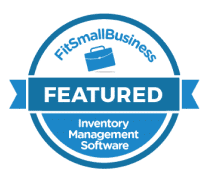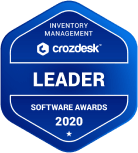Merchandise Planning
Merchandise planning is about striving to make the right product available, at the right time, in the right place,
in the right quantities, and at the right price.
- Inventory Management Basics
- What are the basic functions of inventory?
- Types of Inventory
- What is Inventory Management?
- Inventory / Product Tracking
- Why is Inventory Management important?
- Methods of Inventory Management
- Perpetual Inventory Management
- Periodic Inventory Management
- ABC Analysis
- Just In Time Inventory
- FIFO & LIFO
- Economic Order Quantity (EOQ) Formula
- Vendor Managed Inventory
- Two Bin Inventory Control
- Inventory Cycle Count
- FSN Inventory
- Popular Processes of Managing Inventory
- Challenges in Inventory Management
- Best Practices for Inventory Management
- Maintaining Safety Stock
- Demand Forecasting and Planning
- Merchandise Planning
- Retail Visual Merchandising
- Inventory Turnover Ratio
- Stock Replenishment
- Product Bundling
- Important Inventory Management Terms
- Cost of Goods Sold
- Bullwhip Effect
- Reorder Point
- ABC / Pareto Analysis
- Lead Time
- Big Data
- Bundling and Kitting
- Last-In-First-Out (LIFO)
- Current Demand Inventory
- Demand Override
- Days of Inventory on Hand
- Black Box Forecasting
- Backflush
- Inventory Shrinkage
- Moving Average
- Economic Order Quantity
- Kanban
- Cycle Count
- Consignment Inventory
- Introduction
- What is Merchandise Planning? Definition
- The Process of Merchandising - How to Plan Merchandise
- Analyze and Compare Previous Sales to Forecast Demand
- Deciding on the Merchandise Needs
- Assortment Planning
- Merchandise control – The Open To Buy
- Why you Need to Plan your Merchandise?
- Challenges in Merchandise Planning
- Conclusion
Introduction
It has been observed that a retail business has the chances of losing out a deal on their profits due to a reduction in price and loss of sales. The percentages of such losses vary as per the types of businesses and their ability of inventory management, but the loss of opportunity to generate more revenues is still very much evident, in some cases, even more.
To get an idea of the amount of loss you can incur due to markdown and lost sales, in terms of money, have a look at the example given below.
E.g., If a clothing business has a turnover of $1 million, then the amount of money you could have earned is about $250 thousand, that’s a lot of money and if you reduce 1% loss due to markdown and lost sales combined then your revenue can increase by $10 thousand.
Yep, that’s a lot of money, and you can earn more by meticulously planning the positioning and placement of the right merchandise that is in demand. Merchandising and supply chain management are responsible for huge growth. And, to have merchandise that is in demand and moves swiftly through the supply chain and order fulfillment process. You have to manage inventory efficiently, observe the sales trends, match them with the forecasted trends and maintain the right amount of products at the right time, for the right time, in front of the right customers, and with the right selling price. Sales and merchandising are the two primary functions related to each other but not the same thing.
You might think, “but this is very tough. How can I achieve all these things, in this highly competitive omnichannel retail industry?”
Well, these things are achievable though one can’t be 100% efficient, one can still go on a pursuit to make his merchandise planning perfect. Though different retailers of different industries would have a different way to plan their merchandise, however, the aim or goal of all of them is the same. So, follow this write-up ahead to learn merchandise planning.
But before we start with merchandise planning, let’s first understand what is merchandising. So, basically, merchandising means the act of displaying the goods in an attractive manner so that it boosts sales of merchandise.
However, the Oxford dictionary defines merchandising as “branded products used to promote a film, pop group, etc., or linked to a fictional character.”
Plan merchandising definition is simple – It is a simple strategy of planning, selling, and buying merchandise for maximizing your ROI (Return of Investment).
In short, the practice of presenting any product merchandising in an attractive way to gain more selling and popularity is called merchandising.
What is Merchandise Planning? Definition
Merchandise planning is a method of selecting, managing, purchasing, displaying, and pricing the products in a manner that brings in maximum returns on investment, value addition to the brand name by satisfying the consumer needs while avoiding the creation of excess inventory. Moreover, merchandise planning is about striving to make the right product available, at the right time, in the right place, in the right quantities, and at the right price. You can also make use of appropriate merchandise inventory software for streamlining your inventory operations.
Or, as Shopify says, in layman terms, “if I want to buy product X with color Y and size Z from your shop, you have that available when I come knocking.”
Planning Merchandise can reduce markdowns, out of stocks, and overstock scenarios.
Next thing you might be thinking,” so, how to do this, how to plan merchandise?”
Read on-
The Process of Merchandising - How to Plan Merchandise
As mentioned above, every industry will have a different way of approach to merchandise planning that will suit their specific needs. Retail industries like clothing will have to focus on the size, color, and design that will be in demand and how many of them they will be selling. In contrast, an online grocery store will have to focus on selling different types of edible items and what people will need more in a particular season.
What is merchandise inventory?
Merchandise inventory is the account given on a balance sheet that shows the total amount paid for all the products still in the queue to sell.
Nevertheless, there is still a fundamental merchandising process, which is followed by most of the companies and around which they structure their plan of action. also, the steps in merchandising planning are easy to learn and follow.
Analyze and Compare Previous Sales to Forecast Demand
The first thing you need to do is analyze the previous seasons’ sales data and revenue of each product and the business for each week as a whole along with market surveys and consumer demands you can forecast demand for the current season.
Demand forecasting is the pillar around which the strategy is crafter because, based on this, the stocks are stuffed up. Forecasting involves the anticipation of how a customer would behave during a sales season.
A sales forecast is the primary step in figuring out the amount of inventory is needed and at what time. In detail, the estimates should tell you about the number of the products required to purchase, the selling price of the products, and if it is needed to add new products to the merchandise assortment.
Mostly in sales or demand forecast planning, there are two approaches one is top-down planning and bottom-up planning. In top-down planning, the senior management figures out the demand and sales plan, and then it is given to the merchandising team. On the other hand, bottom-up planning is that in which the mid-level department managers estimate the demand. Data derived from both approaches are then added to get the total demand figures.
Follow these given points to forecast the merchandise requirements
- Analyzing Past Sales Data: As mentioned previously, reviewing the sales data of past seasons of the same period and comparing them with the current sales trends can be very helpful to catch the pattern of bias in the customer’s choices.
- Analyzing the economic state of the market: Be very sure that you know the financial condition of the market because recessions can affect the spending pattern of the consumers.
- Reviewing the sales potential of the product: Compare the market demand of the product and calculate the possibility of that product.
- Research the market for new marketing strategies of the competitors: Marketing strategy is also critical apart from the demand forecast. Find out if there’s a new way you can market your product, or are people looking for a new product, or do you need to introduce a new merchandise line in the market.
- Accumulating the data and Creating the final merchandise forecast: After carrying out all the analysis and calculations, then you can compile all the data and come to a final prediction for each product. And, only then you add more inventory to your warehouse.
Deciding on the Merchandise Needs
Now after you have forecasted demand and you know how much you need to plan how you are going to buy and manage the products so that you can provide the right product, at the right time and in the right place to your beloved customer.
Now there are steps you need to take to plan your merchandise.
(1) Budgeting
(2) Assortment Plan
Budgeting is the first stage of merchandise planning because, first, you need to know how much of your money will be invested or how you can minimize it.
The budget comprises five sections.
- The sales plan – Projecting the amount of each product that will be sold this season from each retail outlet, online platform, or marketplaces.
- Inventory plan– this will tell you how much inventory you need to stock to achieve the demand.
- The planned reductions – This is a backup. It’s the reduction in a product’s quantity in case the product does not perform.
- Planning the purchase levels – Planning of how much a single product will be procured.
- Deciding on gross margin – the difference between the selling price and the COGS
Assortment Planning
Van Herpen defines assortment planning as the combination of all products made available in a store” and a set of products offered within a product category. These products form a set because they share similar physical characteristics.
Assortment Planning is about deciding the number of each product that will be bought to make sure the demand is met. Assortment planning is done majorly to ensure that customers are allocated products in a balanced way. The details of inventory like color, size, materials, brand, etc. are specified.
Merchandise Hierarchy: Products are classified or arranged in a way that would suit the consumer’s buying patterns. This is called a merchandise hierarchy in which the products likely to be picked first or more in quantity are grouped, and the products that are less likely to be sold are kept together. Many times the grouping can go on to create 5-6 levels.
Merchandise control – The Open To Buy
Open to buy is a technique of merchandise control that fulfills two jobs. One, to adjust the merchandise buying according to sales of the products. Second, to maintain the flow of stock so that the sale can take place smoothly as planned.
The advantages of OTB are –
- Saves you from overstocking, understocking, and going out of stock
- Maintains the budget and limits overspending
- Avoids markdowns because of the pressure to sell the excess inventory
- Reduces the loss of opportunity of sales due to out of stock scenarios
Planning for one month, you might want to buy the entire designed stock, but OTB will stop you from buying everything because you already have some on-hand inventory that you might have ordered, but you might not have received it.
Calculating the Open – to – Buy:
Open-to-Buy-Planned EOM stock – Projected EOM stock
EOM = End of Month Open-to-Buy is always calculated for current and future periods.
The Range Plan
The range plan is about creating a balanced range for each SKU so that you have the exact amount of products available for your consumers. The approach of the range plan is to ensure that the merchandise plan is on the spot, and you have every product in your pocket that will be asked by the customer.
The benefit of the range plan is –
- It ensures that items and options for that item are available in the store online and offline all the time and in a way that it helps the customer make a convenient choice.
- This plan is also beneficial as it restricts businesses from overbuying or understocking.
- Another advantage is that it provides the availability of a sufficient amount of merchandise so that all the stores, both online and offline, across different locations, are equipped with stocks to perform business profitably.
The Model Stock Plan
Post the decision of money to be invested is taken, another decision on what to buy and in what quantity also needs to be made. The model stock plan, as the name suggests, is about precisely stocking the items in the amount required for each merchandise line.
To execute the model stock plan, you would need a specific demand of the customers as in what the customer would like to buy and create levels of the amount required for each type of consumer choice. Lastly, in the plan, after the specific demand is figured out, the money is allocated for each type of item.
Why you Need to Plan your Merchandise?
Retailers of modern times might not ask this question because they know how vital merchandise planning is; however, for the beginners or the ones who think that it is not that important, here are some of the reasons why you should plan your merchandise.
- Merchandise planning can help you stock your warehouse in a way that increases the inventory turnover ratio.
- It decreases inventory carrying costs as there is less unwanted inventory in the warehouse and hence less labor, less maintenance cost, less loss through obsolescence as most of the stock is sold, less depreciation of inventory, etc.
- Brings value addition to the company as your customer very rarely goes empty-handed and has enough options to compare products to make a purchase.
- Since you have the right product, in the right quantities, at the right time, at the right place, and at the right selling price, you don’t have to provide more discounts to get rid of old inventory, and there are very few out of stock situations.
- You don’t have to go through situations of panic while trying to manage your inventory and meet the demand.
- Planning merchandise smartly leads to smart investment in inventory i.e.; your money is tied to only those stocks that will generate revenue.
- Your revenues increase as there are fewer markdowns, and products are available for sale.
Challenges in Merchandise Planning
Merchandise planning isn’t as easy as it seems on paper. There are a lot of dilemmas involved in this, and as a smart planner, you need to make correct decisions to get out of those dilemmas.
Maintaining a balance between an online and offline retail business
Yes, retailers having business both online and offline have to design a course of action for both and ensure that the inventory is available for both portals. Understanding the needs of an online customer and offline customer is the key because both, though they want a quality product, have a different approach to shopping. As far as offline is concerned, visual merchandising plays a vital role in sealing the deal.
You need to have an omnichannel approach to make it work, and therefore you should have a great connection between all the stores and their inventory. For that, a centralized inventory management system can help you to accumulate all the data on one desktop screen.
Blindly believing the historical data
Most big companies are cursed with this because they have data in abundance, and it’s straightforward for a planner to get lost in the details of the data and forget the current situations. Therefore, it’s essential to take the current market behavior seriously and amalgamate the historical data with the current trends.
How much of the right product is enough?
This is also a balancing act because after you know that a product is right for the consumers, you need to figure out how much of that correct product is enough. The quantity is significant because you might think that the merchandise will sell smoothly, but there is a limit to everything, so you need to understand how much you should stock without overstocking. You can use the OTB formula i.e., open to buy to make sure you are buying in a controlled manner.
Planning merchandise for international markets
It is very much essential to understand that the plan that works for the domestic markets may fall flat for the international market, including the choice of merchandise because of the change in culture, geological demographics, and weather.
Jason Gmerick, who is a Senior Merchandise Planner at Victoria’s Secret, explains the challenge of Merchandise Planning for the international market in an apt way in the series from the viewpoint.
He says,
“International markets offer their own challenges above and beyond the normal planning process. Often times US companies export their US product, which does not always translate in all areas of the world. Beyond just cultural inconsistencies when taking a product worldwide, there are challenges as simple as the product you are currently buying (say for winter) will not translate to a part of the world (say the southern hemisphere) which would be in summer during your winter season. When going into an international market, corporations want to come out of the gates strong, and this means having plenty of inventory to support sales and potentially unplanned upside. While store openings can be difficult to nail down in the US, they become even harder to keep on time in an international market. A two-month delay in a store opening can mean a large back up in inventory if not planned accordingly.”
Conclusion
I hope the information is helpful to you for planning the merchandise effectively. Remember, analyzing previous years’ sales and inventory data and current year’s trends are very crucial merchandise. You need to use the OTB formula so that you don’t overspend. Also employing an automated inventory management system would help you in centralizing your inventory data so that you can plan your inventory for all the sales channels in a smarter way.
“Business isn’t about investing a lot of money, it’s about investing the correct amount of money in the correct amount of the correct product at the correct time to be sold to the correct customers at the correct time. And that’s why Merchandise Planning is crucial.”









